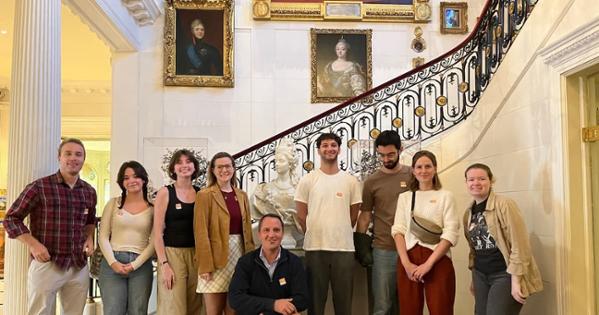Student tour views impressive Hillwood Museum Tsarist Russia collection

On Saturday, October 19, 2024, the Carmel Institute organized a student trip to the Hillwood Estate, Museum & Gardens. The group explored Marjorie Merriweather Post’s collection of Russian imperial porcelain and jewelry, most of which she acquired while accompanying her third husband Joseph Davies to Moscow between 1937 and 1938 after President Roosevelt appointed him ambassador to the USSR.
The Hillwood not only boasts two Faberge Eggs, but many other unique creations of Faberge’s workshop. It also has the original nuptial crown of the last Tsarina, Aleksandra. The students heard about Karl Briullov’s Portrait of Countess Julia Samoilova (1834) and Konstantin Makovskii’s A Boyar Wedding Feast (1883). Both originals are part of the museum’s permanent collection. The students then explored the religious art collection and talked about the Romanov dynasty, almost all whose members are represented in the portraits that greet visitors in the mansion’s grand vestibule.
Museum visits, concert attendance, and class-trips have been part of the Carmel Institute’s programming since its inception. As Professor Fedyashin has always reminded his students, although our knowledge about the past depends primarily on reading, history must also be walked, seen, touched, smelled, and tasted. After the mansion, the group toured the Hillwood’s famous gardens divided into “garden rooms,” per Ms. Post’s directions and approval.
At lunch at the Hillwood café, the students also tried the famous Postum beverage. Ms. Post’s father, Charles William (C. W.) Post invented this drink in the late nineteenth century, and it gave its name to the Postum Company, which he founded in Michigan. Made from roasted wheat-bran and molasses, Postum became the nucleus around which C. W. Post built his business empire, which eventually became General Foods.
The trip was a visual component of a holistic experience that stays with students of history for their entire loves. Engaging with history on the page, on the screen, and in motion helped to open young minds to the importance of cultural diplomacy and the great legacy of American philanthropy.